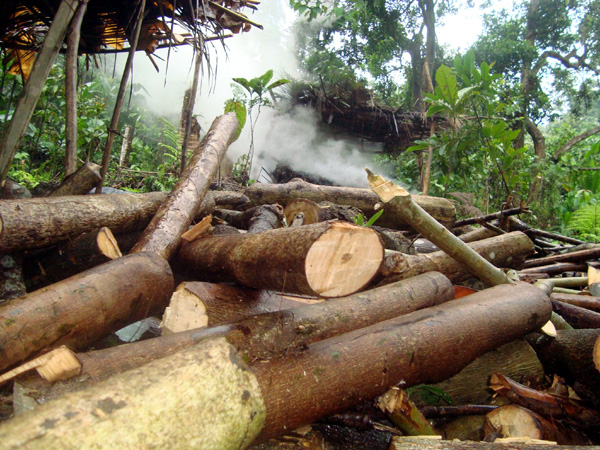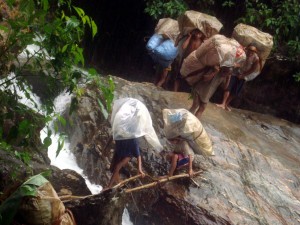

A brief rest—a pause perhaps.. “taking nothing but pictures, leaving nothing but footprints” while regaining lost energy amid a refreshing beauty of the surroundings.
But something caught their attention—felled trees, big and small. A few meters away, a group of indigenous Mangyans could be seen approaching. They were carrying huge sacks of charcoal on their back, crossing a makeshift bridge.
The scene looked surreal.
A brief chat with the natives revealed that the charcoal were to be sold to lowland markets. One of the hikers asked how much money they make from a sack of charcoal. The Mangyan smiled and answered, “One hundred 10 pesos.” The natives also warned them not to go further, saying they were not allowed to explore the area. They just ignored the warning.
It was a disquieting realization about the threats to Mount Halcon. Amidst global environmental changes, and the many laws, programs, protocols, moratoriums, etc. made to protect the environment, activities like this still occur.
In 2005, a five-year ban on climbing Mt. Halcon was imposed. The moratorium was supposedly meant to allow this already ecologically fragile mountain a time to regenerate.
But was it able to do so? Or the years that the mountaineers were barred from exploring Mt. Halcon could have been the time that destructive activities went unchecked?
Mt. Halcon is a precious wealth of Oriental Mindoro. It is an important natural resource and watershed for the province. It needs special protection.
(The author is the president of Halcon Mountaineers)

